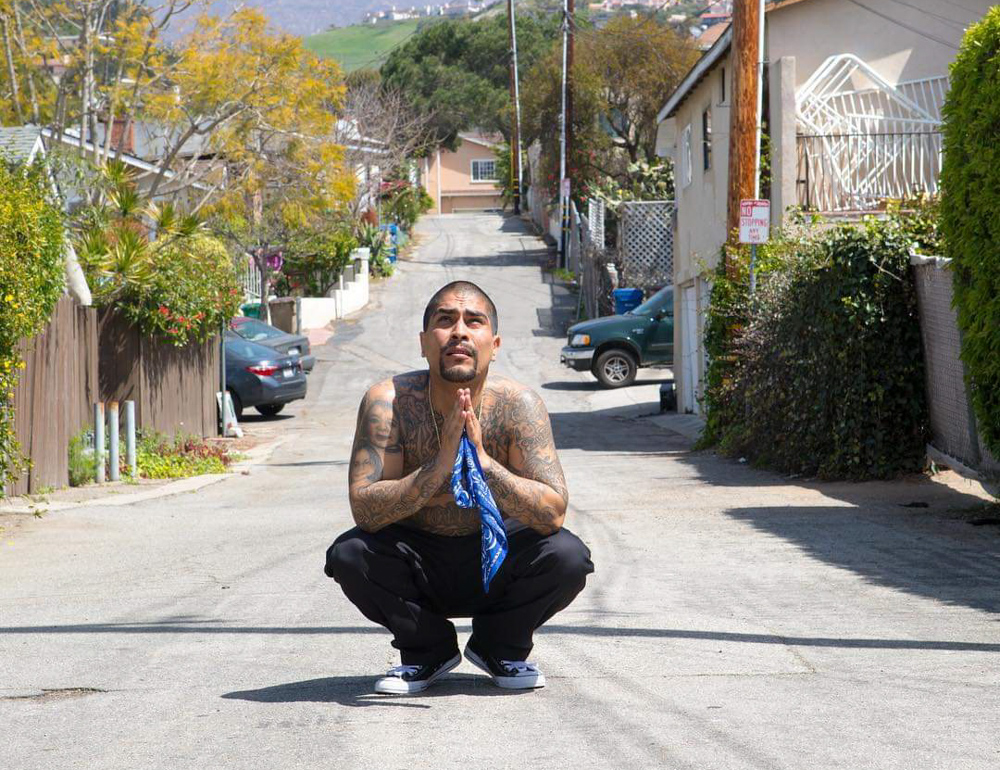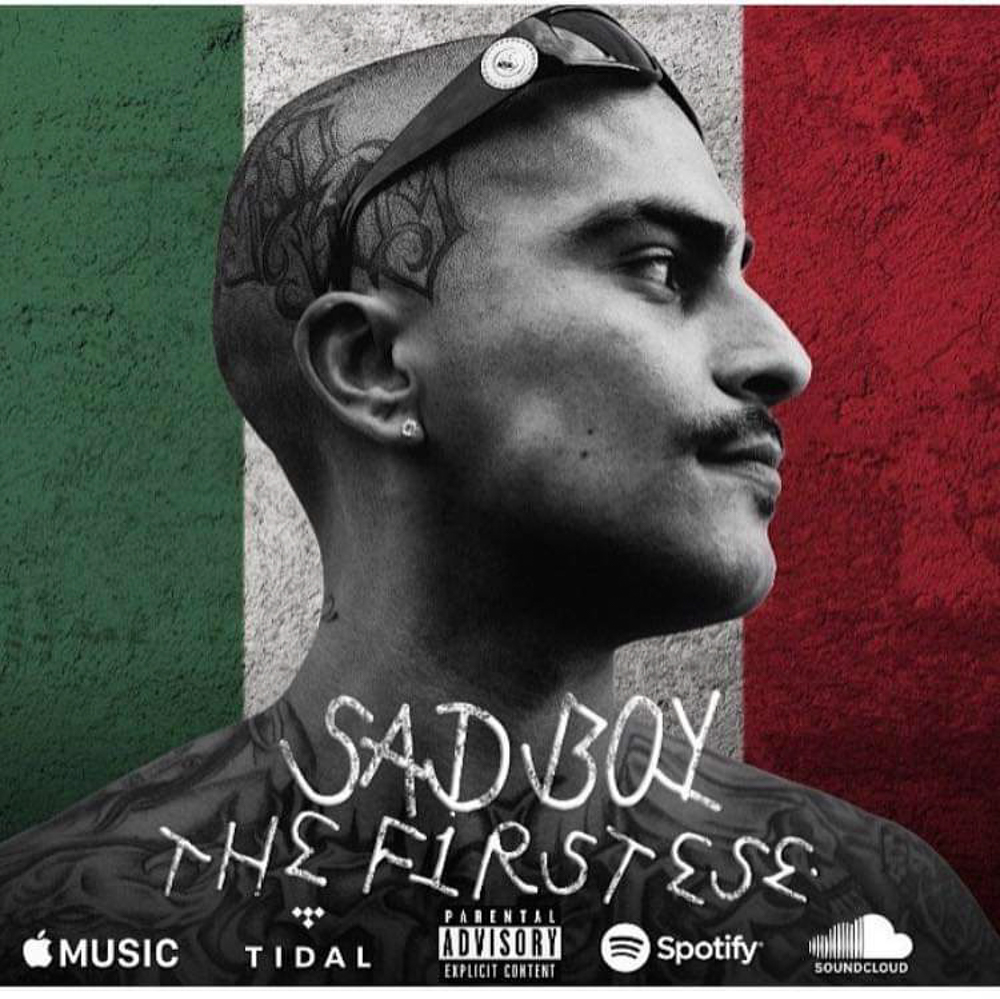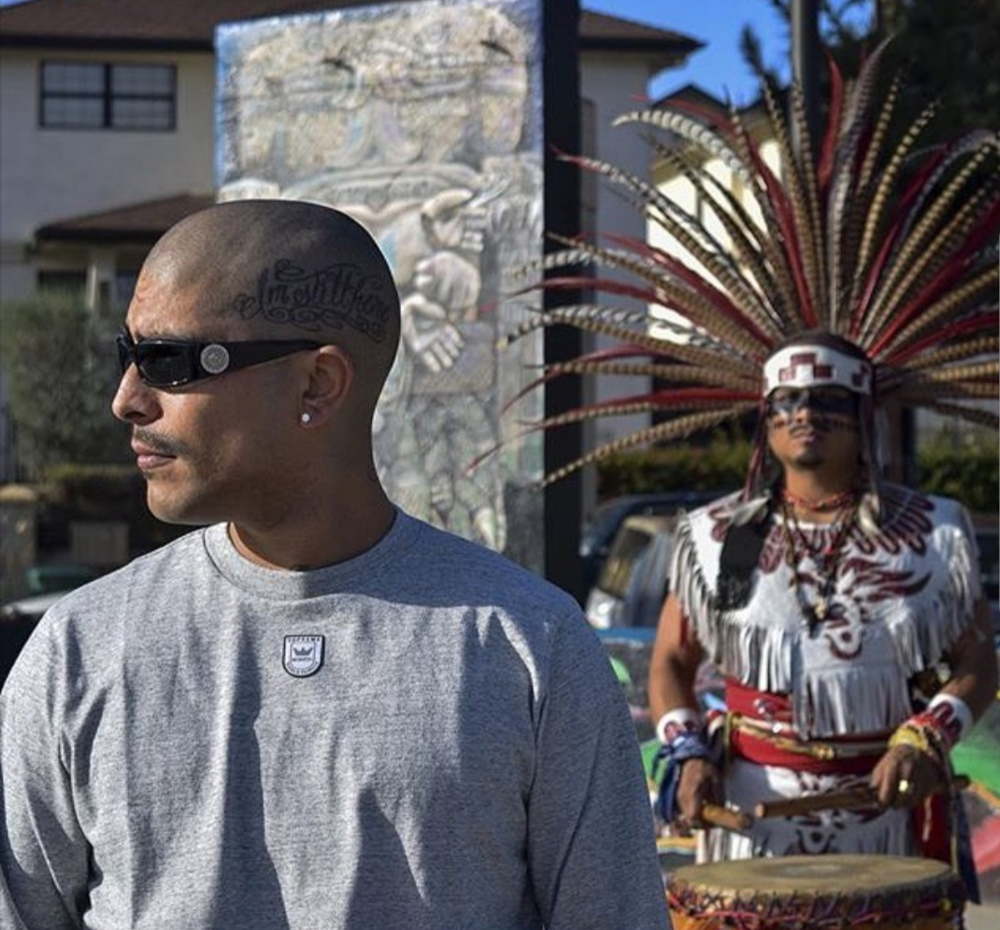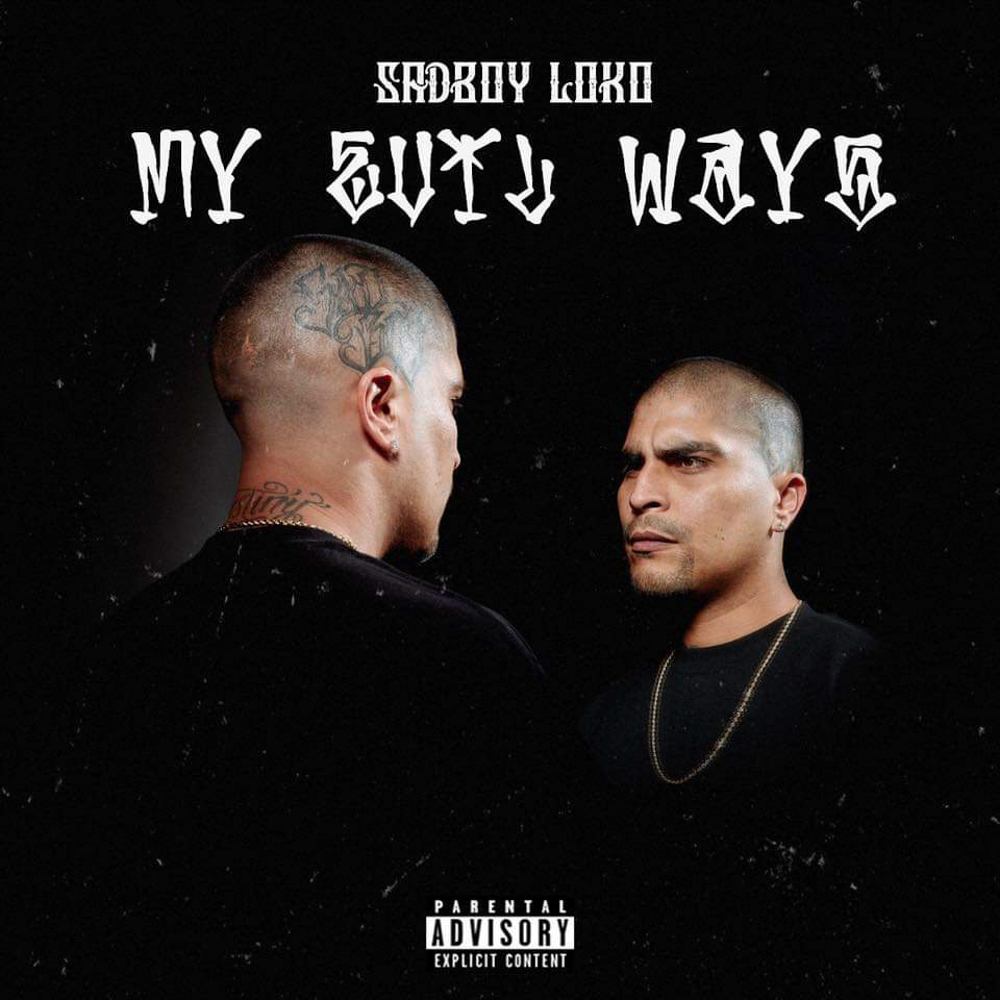
Sad Boy Loko is a name many young Latinos recognize here in Santa Barbara; the rapper’s raw, explosive rhymes and roughly produced music was the soundtrack to summer-night cruising and lazy weekends. A Dons alum, Sad Boy was particularly well-known to Santa Barbara High students, me included. We listened as his music grew alongside us, and in 2012, when I graduated from Santa Barbara High School, he released his first album, I’m Still Here, which he made in a garage. By 2015, Sad Boy had signed to what the following year would become 4Hunnid Records, the label owned by the platinum-selling rapper YG. Since then, his popularity has grown beyond Santa Barbara to global audiences. For those of us who had followed his music, it was a source of pride that one of our own was making it in the rap game.
With his music career on the rise, Sad Boy and I met on August 2, 2018, at La Tapatía — just around the corner from our alma mater — to talk about his life, music, and ambitions. Less than 24 hours later, on August 3, Sad Boy (known legally as Mario Hernandez-Pacheco) was arrested at Fiesta’s Mercado del Norte in Mackenzie Park while on a family outing with his children and partner.
Pacheco has been charged with attempted murder, robbery, and felony assault by means of force likely to create great bodily injury. His charges include three gang enhancements, which allege that the crime was committed to benefit a gang. Each gang-enhancement charge can add an additional 10 years to a sentence. On August 15, 2018, in front of Superior Court Judge Clifford Anderson, Pacheco pleaded not guilty to all charges. He is currently in county jail, awaiting his preliminary hearing scheduled for March 6. He’s currently being held without bail and has been in custody for more than six months.

Sad Boy’s life in Santa Barbara has been marked by recurrent hardship, his struggles reflective of the experiences of many of his Santa Barbara fans. But when I talked with him last August, things were looking up. His second album with 4Hunnid, My Evil Ways, had just been released a few months earlier in May. His first headlining performance was scheduled for August 19 in Santa Ana, and he was excited about his future as an artist. Sad Boy also spoke with great love about his family, especially his children, and talked about how determined he was to provide for them. He shared with me how his mentality and priorities had changed over the years, particularly since being signed to 4Hunnid. “I used to hang out with gangsters and wanted to be a gangster. But now I’m hanging out with millionaires, and I want to be a millionaire,” he said.
From the Gutter
Sad Boy was born in Santa Barbara 29 years ago. He grew up in a big family — he has five siblings — and much of his music recounts his upbringing. In his song “Que Viva la Raza,” he chronicles the struggles of Mexican immigrants trying to get by in the United States, mentioning his parents’ Mexican origins and his father’s deportation when Sad Boy was young. “Familias separadas, madres abandonada / Y hijos sin un padre por gobierno que nos manda,” Sad Boy sings. (Translation: “Families are separated, mothers are abandoned / And kids are left without a father all because of the government that’s in charge.”)
The word “gutter” appears often in his raps; he says he came from the gutter and calls his work “gutter music.” When I asked him what that meant, he said, “Gutter is the streets, the bottom of the barrel, government cheese, Kellogg’s — the realest shit.”

After Sad Boy’s father was deported, his mother continued to work two jobs to support the family but couldn’t make ends meet. The family’s situation deepened when their landlord had his property foreclosed. The family was driven into what Sad Boy called “motel living.” “I slept in every motel you can think of — Motel 6, Country Inn,” he said, listing a few. The family struggled to pay for the rooms, especially when prices surged during Fiesta and other holidays. Sad Boy tried to keep his circumstances hidden from his friends. Since most motels don’t have kitchens or microwaves, the family often had cold sandwiches and hot-water ramen for dinner. “When you live like that,” he said, “you learn to work with what you have. That’s what I mean when I say, ‘gutter.’”
As Sad Boy and his family moved from place to place, music was one of the few constants in his life. He and his friends spent hours coming up with rhymes. To record their songs, they would borrow recording equipment from a young man in the neighborhood. When the man came around to retrieve his equipment, Sad Boy would pretend he had lent it to another kid so he and his friends could keep recording for a couple more days.
It was these early recordings that became some of Sad Boy’s biggest hits. For example, the hypnotic, piano-threaded “Gang Signs” was written before he had a label; however, after he was signed, 4Hunnid produced a video, and the song went viral. It now has more than 34 million views on YouTube. Most of the material from his first album with 4Hunnid, The First Ese, in fact, was written when he was a teenager recording in garages. With his label promoting his work, his popularity skyrocketed.

At La Tapatía, over enchiladas and Jarritos, Sad Boy talked about wanting to transition his writing into more “positive stuff.” “Back then, my mentality was different,” he explained, referencing the The First Ese. “What I said [then], I wouldn’t feed the youth now. … All that stuff is old.”
As a teenager, Sad Boy’s tumultuous life led him into trouble with the law. He served time at Los Prietos Boys Camp, a juvenile detention center, but continued writing music and poems. He told me, with much pride, that other boys at the camp would ask him to write poems for their girlfriends in exchange for doing his chores. “If you had a man at Los Prietos while I was in there, like 99 percent of the stuff he wrote you was all me,” he laughed.

While Sad Boy was serving time as a teenager, his first child was born. He was granted three days to see his new baby. “It was hard. I didn’t want to go back,” he said of having to return to the detention center. After Sad Boy became a father, his unlawful behavior largely came to a halt. That’s when he really got into music, he said. He started performing at local venues like Tony Rays (now Wine Therapy) and releasing homemade music videos.
To further himself in his musical aspirations, Sad Boy enrolled in piano, songwriting, and Pro Tools courses at Santa Barbara City College. “I learned structure about melodies, bridges, hooks, notes,” he said. As passionate as he was about his classes, he felt discouraged by one of his instructors. Sad Boy was a couple of minutes late to one of his courses and was subsequently asked to leave. If he wasn’t going to take the class seriously, the instructor said, then he should get out of his class. “[He didn’t know] what I did and that I was taking piano classes, [that] I was probably the one taking it the most serious,” said Sad Boy, who eventually dropped out of SBCC.
On the Come Up
Sad Boy was again living in a motel with his family in 2015 when he unexpectedly got a FaceTime call from YG, a successful young rapper out of Compton who in 2016 founded his record label 4Hunnid Records. Sad Boy had just turned 25 when YG invited him to his studio in Los Angeles. On the drive down, his car started sputtering just before exiting the freeway; he pulled into the studio’s parking lot as it gave out. In the studio, YG ran Sad Boy through what amounted to an audition. YG played the beat to a song he was working on — it was later released as “Don’t Come to L.A.” on 2016’s Still Brazy — and Sad Boy began rapping as YG and his team listened. The session went well, and a week later, Sad Boy signed with what would become 4Hunnid.
For the first time, Sad Boy was paid real money for his music. When YG and his team found out that his family was living in a Santa Barbara motel, they asked why he hadn’t come to them for help. “I worked for it. I worked for mine,” said Sad Boy. With his first check, he put a deposit down on an apartment and bought his mom a car. At the time, she was commuting to her two jobs by bus. “I took care of everything. My mom, family … I took care of all that stuff. All my debts. I can supply for my family. That’s a man’s dream,” said Sad Boy.
Sad Boy can be heard on YG’s “Don’t Come to L.A.” and “Blacks and Browns,” and the two were featured on Slim 400’s single “Bruisin’.” YG asked Sad Boy to join him on his 2016 Fuck Donald Trump Tour. Life on the road was an eye-opener for Sad Boy. On tour, everyone was given a $100-per-day food-expense account, which seemed excessive to Sad Boy, whose gutter days were not far behind him. “How could I spend $100 on myself in one day to eat? I can bring that back and feed my kids. … That’s my job as a man, as a father.”
During lunch, Sad Boy told me stories about how his music had helped bridge gaps between him and his former rivals. “When a man starts respecting your work and craft, [there’s] nothing to do but respect back,” said Sad Boy. Initially, it was love from older homies and even some of his rivals who liked his music that Sad Boy points to as motivation to continue with and pursue music.

Sad Boy credits music for changing the trajectory of his life from a troublemaking teen to an ambitious musician and a providing and loving father. “I gotta give programs respect,” said Sad Boy about programs such as the Boys & Girls Club’s Notes for Notes and the S.B. Teen Center, both of which offer free recording equipment to teenagers. “I know why they do it — to save the youth. That’s what saved me. They’re trying to get kids off the street. It’s what kept me out of trouble to this day!” Sad Boy told me that he wanted to focus on being a good example for kids. “I don’t want to lead [the kids] to the wrong circle,” he said. He grew up rapping about what he was seeing in his Eastside neighborhood, which was largely gang activity. “I don’t rap about jewelry and fancy cars,” said Sad Boy. “That’s nothing I’ve seen in my life.”
As Sad Boy’s outlook on life has evolved, so has his lyrical content. He’s more heavily addressing the struggles of growing up poor and brown in America. “Even [Latino] rappers out now are not really focused on our struggle,” he said. “In the timeline of hip-hop for Latinos, it’s something we’ve skipped, so we gotta do it.” His collaboration with YG on “Blacks and Browns” directly addresses the difficulties faced by minorities. “I’m not just entertaining the hood; [I’m] entertaining the world now,” he said. However, if he had it his way, Sad Boy would be working on love songs. “If it was for me, I’d be dropping love albums.”
When we spoke on that summer day, Sad Boy also said he’s focused on making it big in the music industry. That ambition is reflected in lyrics for “I Want It All,” which talks about his career aspirations and his rise from poverty. “I want it all / I’m a ball like monopoly / And own properties / Can’t nobody stop a G,” raps Sad Boy. He wants to make enough money to buy a house for his kids. “That’s my goal,” he said. “Or else, I look at my career and say, ‘For what? Just for fun?’ Yeah, there’s passion, but I have priorities and mouths to feed.”

Uncertain Future
Pacheco was arrested August 3, 2018. According to court documents, the alleged incident took place the evening of July 23, 2018, at the Cacique Street footbridge on the Eastside. Prosecuting Attorney Kimberly Siegel claims that Pacheco, two teen assailants, and a fourth unidentified adult suspect “repeatedly stabbed, stomped, punched and kicked” a 19-year-old victim and stole his backpack. According to Siegel, the victim allegedly believed that he, the two juveniles, and Pacheco were going to the Cacique bridge to smoke marijuana. When they arrived at the footbridge, the fourth unidentified adult suspect took the backpack from the victim. Allegedly, when the victim warned the suspects that he was going to call the police, he was attacked. The contents of the backpack were not revealed. According to Siegel, the victim has “no known gang ties or affiliation.”
Pacheco is currently being held without bail at the Santa Barbara County Jail. Pacheco’s attorney, Adam Pearlman, submitted a motion to have him released on his own recognizance with conditions set forth by the courts or to have his bail reduced. Bail was originally set at $1.1 million, the standard bail amount for attempted murder in Santa Barbara County. Pearlman made the case that Pacheco is not a flight risk. He presented the courts with a number of options, including house arrest on an electronic monitor and no contact with known gang members. Pacheco’s production company offered to put him up in Los Angeles to keep him out of Santa Barbara if the courts were concerned about him being in the county, with a condition that he only return to Santa Barbara for court appearances.
According to court documents submitted by Pearlman, “The proof against the defendant is not substantial because there is an identity issue.” His motion goes on to state that the police never had the victim identify a known picture of Pacheco. Instead, police showed the victim a Speedy Mart security video that allegedly shows Pacheco walk in — and later out of — the store with the two alleged juvenile assailants and the victim. (Speedy Mart is next to La Tapatía, where Sad Boy and I met in August.) Pearlman continues, writing that “the surveillance videos at Speedy Mart are notoriously bad quality” and that “it is the only thing tying Mr. Pacheco to this case.”

Siegel opposed Pacheco’s release out of concern for public safety, citing his alleged gang ties and the severity of the injuries the alleged victim sustained. According to the courts, the alleged victim suffered a skull fracture. Siegel submitted to the court 11 photographs documenting the severity of the alleged victim’s injuries. While a significant amount of Pacheco’s music falls into the category of gangster rap, he has never been arrested for or convicted of a gang-related charge.
As for the gang-association claims, Siegel pointed to documented incidents in 2011, 2012, and 2016 when police officers interacted with Pacheco. Pearlman clarified for the court that the three incidents were field interrogation cards, which are notes officers keep on informal questioning or contact they have with citizens who may be able to help in an investigation. Siegel also pointed to a 2010 incident in which Pacheco was the victim of a stabbing. Pearlman challenged the incident, saying, “The fact that he was a victim and was stabbed do not show that he’s a danger to others.”
Pacheco was denied bail on October 10, 2018. Judge James Herman cited the “severe injury” inflicted on the alleged victim and Pacheco’s alleged gang affiliation as the reasons why. “I also take issue with the idea that the fact that he was a victim of gang violence is somehow exonerating or shouldn’t be looked at,” Herman said. “Field interrogation cards are something that does collect intelligence and information on gang activity. So irrespective of the fact that he does not have a prior criminal conviction except for a DUI [in 2010], it’s pretty clear that for the purposes of this bail hearing that he has a long history as a member of the Eastside Gang with the violent tendencies that the gang imposes on the community.”
Just seven months after his arrests, the preliminary hearing is scheduled for March 6, at 8:30 a.m. in Courtroom 1. On that day, evidence will be presented from both sides for the first time.The Santa Barbara Independent will continue covering the case as it unfolds.




